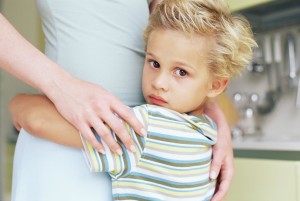Characterised by feelings of worry, nervousness or apprehension about an event with an uncertain outcome, or feelings of inadequacy, anxiety feels much the same in children as it does in adults.
What does Anxiety in Children look like?
Anxiety as a mental health disorder can include the following:
Separation Anxiety Disorder
- Excessive anxiety of being separated from those to whom the individual is attached;
- Distress when anticipating or experiencing separation from home or attachment figures (a parent);
- Excessive worry about losing a major attachment figure, or possible harm to them;
- Refusal or reluctance to go out due to fear of separation;
- Fear of being alone without a major attachment figure;
- Reluctance or refusal to sleep away from home or the major attachment figure;
- Repeated nightmares involving separation;
- The avoidance has lasted at least 4 weeks in children and adolescents.
Selective Mutism
- Failure to speak in social situations, despite speaking in other situations;
- Must last for at least one month.
Specific Phobia
- Extreme anxiety or fear of particular objects or situations;
- In children the fear or anxiety may be expressed by crying, tantrums, freezing, or clinging;
- Must last for up to six months and be persistent during this time.
Social Anxiety Disorder
- Severe anxiety about being criticised or negatively evaluated by others;
- Fears of meeting unfamiliar people;
- Being observed; and
- Performing in front of others.
- In children this may be expressed by crying, tantrums, freezing, clinging, shrinking, or failing to speak in social situations;
- In children, the anxiety must occur with children their own age and not just with adults.
Panic Disorder
- Repeated sudden surges of overwhelming fear and anxiety;
- May include chest pain, choking, shortness of breath, dizziness, or fear of dying.
Agoraphobia
- Fear of being in open or closed places; crowds; outside of the home alone;
- The fear or anxiety must last for more than 6 months.
Generalised Anxiety Disorder
- Excessive worry about daily situations;
- Must be occurring most days for more than six months.
What are the Symptoms of Anxiety?
The experience of anxiety will vary between individual children, but generally includes:
- concentration difficulties;
- restlessness;
- avoidance behaviours;
- increased heart rate;
- trembling or shaking;
- feeling lightheaded or faint;
- numbness or tingling sensations;
- upset stomach or nausea;
- sweating.
How is Anxiety treated?
The psychologist will discuss with the child and/or parent, background history, and may use questionnaires, to develop an understanding of the potential factors that might be contributing to the anxiety.
A treatment plan is then developed; for anxiety disorders, this can involve CBT, mindfulness, exposure therapy, relaxation and other helpful strategies. In the case of children, this might involve play therapy, drawing techniques, the use of feeling cards, discussing values and setting goals for the child. Along with the parent, the child will be guided through coping strategies in order to reduce the anxiety symptoms.
 Author: Meggy Delaunay, PG Dip Psych Practice, PG Dip Dev Psych, M Genetic Psych, B Psych, MAPS.
Author: Meggy Delaunay, PG Dip Psych Practice, PG Dip Dev Psych, M Genetic Psych, B Psych, MAPS.
Meggy Delaunay is a psychologist who primarily works with children, adolescents and young adults. She is a registered Psychologist in Australia, New Zealand and France, and can provide therapy sessions in English and French.
To make an appointment try Online Booking. Alternatively, you can call Vision Psychology Brisbane on (07) 3088 5422.
